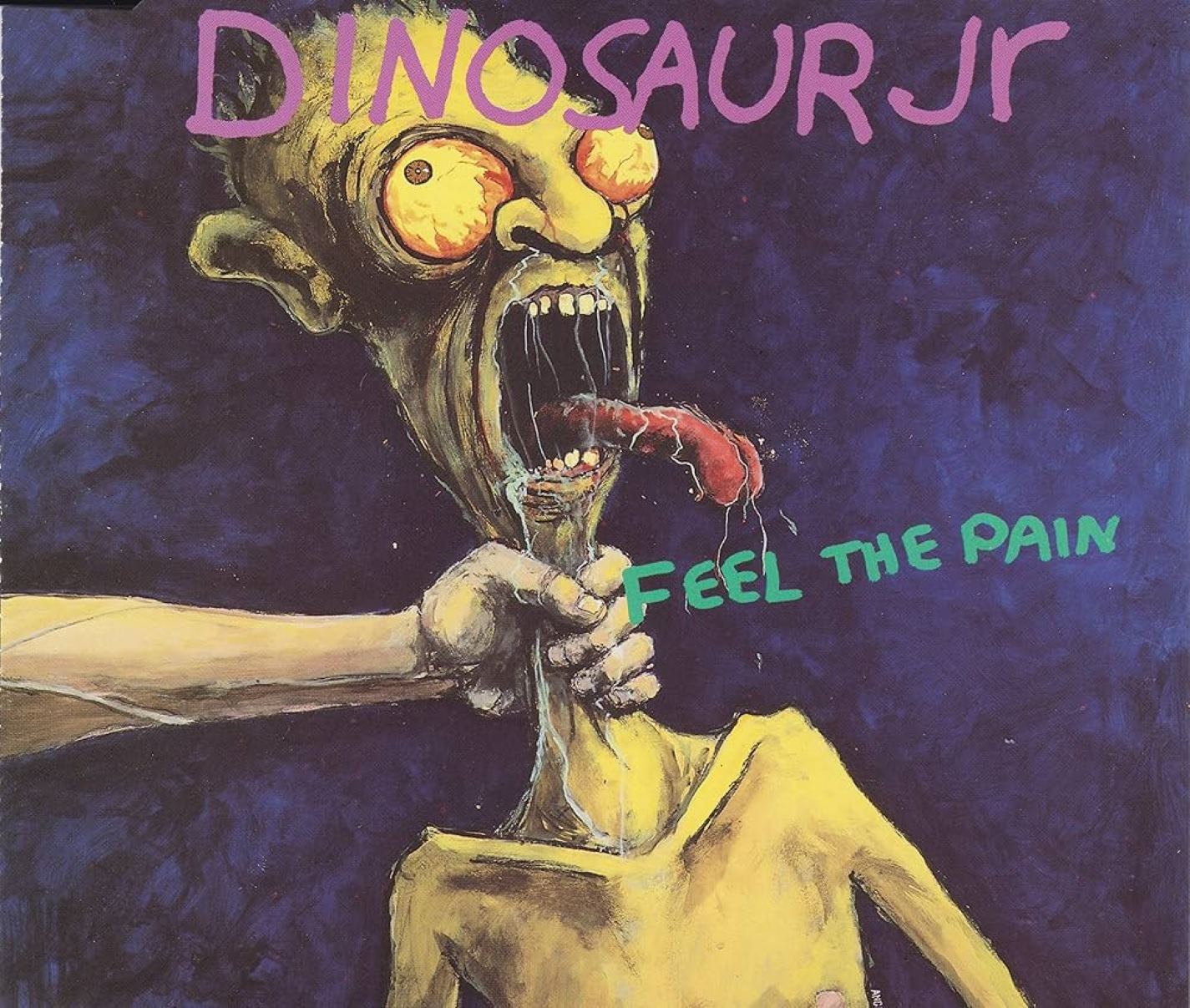Home>Events & Info>Music Therapy>How Does Music Therapy Relieve Pain


Music Therapy
How Does Music Therapy Relieve Pain
Published: February 2, 2024
Discover how music therapy can effectively relieve pain and enhance well-being. Explore the benefits of music therapy in managing pain and promoting healing.
(Many of the links in this article redirect to a specific reviewed product. Your purchase of these products through affiliate links helps to generate commission for AudioLover.com, at no extra cost. Learn more)
Table of Contents
- Introduction
- Understanding Music Therapy
- The Role of Music Therapy in Pain Management
- The Psychological Effects of Music Therapy on Pain
- The Physiological Effects of Music Therapy on Pain
- Types of Music Therapy Techniques for Pain Relief
- Research and Evidence Supporting Music Therapy as a Pain Relief Method
- How to Incorporate Music Therapy into Pain Management
- Conclusion
Introduction
Music has been celebrated throughout history for its ability to evoke emotions, uplift spirits, and bring people together. But did you know that music can also have therapeutic benefits? Enter music therapy – a field that utilizes the power of music to promote healing and improve well-being.
Music therapy is a specialized discipline that combines the art of music with the science of psychology and neuroscience. Its aim is to use music as a tool to address physical, emotional, cognitive, and social needs of individuals. By harnessing the unique properties of music and tailoring interventions to specific goals, music therapy can be an effective treatment modality for a range of conditions, including pain management.
Pain is a complex and multifaceted experience that can diminish the quality of life and hinder daily activities for those who suffer from it. Traditional approaches to pain management, such as medication or physical therapy, are often effective but may not address the emotional and psychological aspects of pain. Music therapy, on the other hand, offers a holistic approach that targets physical, emotional, and cognitive dimensions of pain simultaneously.
In this article, we will explore the role of music therapy in pain management. We will delve into both the psychological and physiological effects of music therapy on pain, examine different types of music therapy techniques, and analyze the research and evidence supporting its efficacy. Finally, we will discuss how individuals can incorporate music therapy into their own pain management strategies.
Whether you are a music enthusiast, a healthcare professional, or someone seeking relief from chronic pain, this article will provide valuable insights into the transformative potential of music therapy in pain management.
Understanding Music Therapy
Music therapy is a specialized field that takes advantage of the power of music to improve physical, emotional, cognitive, and social well-being. It is a client-centered approach that involves a trained music therapist using music-based interventions to meet the individual needs of each person. The therapist may employ various musical elements, such as rhythm, melody, harmony, and lyrics, and tailor them to the specific goals and preferences of the client.
Music therapy is based on the principle that music has a profound impact on our brain and body. When we listen to or participate in music, it stimulates multiple areas of the brain associated with emotions, memory, attention, and movement. This activation can lead to various therapeutic outcomes, including pain relief, stress reduction, improved mood, increased motivation, and enhanced communication and self-expression.
Music therapists undergo extensive training to develop not only their musical skills but also their knowledge in psychology, neuroscience, and therapeutic techniques. They have a deep understanding of the therapeutic potential of music and how to apply it effectively in a clinical setting. Importantly, music therapy is a evidence-based practice, meaning that it is supported by rigorous scientific research and has proven efficacy in treating various conditions, including chronic pain.
It is important to note that music therapy is distinct from simply listening to music for leisure or relaxation. While both can be enjoyable and have a positive impact on mood, music therapy is conducted in a purposeful and intentional manner, with specific therapeutic goals in mind. The music therapist carefully selects or creates music interventions that are tailored to the needs and preferences of the individual. These interventions may include activities such as listening to music, singing, playing musical instruments, improvising, composing, or engaging in guided imagery exercises.
Music therapy is a highly adaptable therapy that can be utilized with people of all ages and diverse backgrounds. It is employed in a variety of settings, including hospitals, rehabilitation centers, schools, mental health facilities, and community organizations. The collaborative and creative nature of music therapy allows individuals to actively participate in their own healing process and empowers them to explore emotions, find inner strength, and discover new ways of coping with their pain.
In the next sections, we will explore in more detail how music therapy can specifically aid in pain management, both from a psychological and physiological perspective.
The Role of Music Therapy in Pain Management
Chronic pain can have a debilitating impact on a person’s physical and emotional well-being. While traditional approaches to pain management often focus on medications or physical therapies, music therapy offers a unique alternative that addresses pain from a holistic perspective. It combines the power of music with therapeutic techniques to provide relief, improve mood, and enhance overall well-being.
One of the key roles of music therapy in pain management is its ability to provide a distraction from the pain. Engaging with music can redirect attention away from the discomfort, allowing individuals to shift their focus and experience a sense of relief. Music has the power to transport our minds to different emotional and mental landscapes, creating a temporary escape from the overwhelming sensations of pain.
Furthermore, music therapy can help regulate emotions and reduce stress and anxiety associated with chronic pain. Listening to calming music or engaging in music-making activities can induce relaxation, which in turn can lead to a reduction in pain perception. Music has a unique ability to evoke emotional responses and promote a sense of tranquility and well-being.
In addition to its psychological benefits, music therapy also has physiological effects on pain management. Research has shown that music can stimulate the release of endorphins, which are natural pain-relieving hormones. Endorphins act as the body’s own analgesic, reducing the perception of pain and promoting a sense of pleasure and well-being.
Another way music therapy can support pain management is through its impact on the autonomic nervous system. Music has been shown to influence heart rate, blood pressure, and respiration, helping to create a more relaxed and balanced physiological state. By regulating these functions, music therapy can reduce the physical symptoms associated with pain, such as muscle tension and increased heart rate.
Moreover, music therapy can enhance the effectiveness of other pain management techniques. When combined with medication or physical therapy, music therapy can augment the positive outcomes and provide an additional layer of support. It can improve the overall treatment experience and contribute to a more comprehensive and integrated approach to pain management.
Overall, music therapy plays a significant role in pain management by addressing the psychological and physiological aspects of pain. It offers a non-invasive, drug-free, and holistic approach that can be tailored to the individual’s preferences and needs. Whether through listening to music, creating music, or participating in music-based activities, music therapy can provide a powerful tool for individuals to cope with their pain, enhance their well-being, and reclaim a sense of control over their lives.
The Psychological Effects of Music Therapy on Pain
Music therapy has profound psychological effects that can significantly impact pain management. It harnesses the emotional and cognitive power of music to improve mood, reduce stress, and enhance coping mechanisms for those suffering from chronic pain.
One of the primary psychological effects of music therapy on pain is its ability to induce positive emotions and elevate mood. Listening to or engaging in music activates brain regions associated with pleasure and reward. This release of dopamine, a neurotransmitter associated with feelings of pleasure and happiness, can counteract the negative emotional impact of chronic pain. The uplifting nature of music can create a more positive mindset, which can in turn alleviate the psychological burden of pain.
Music therapy also provides a means for emotional expression and catharsis. Chronic pain often comes with a range of complex emotions, including frustration, anger, sadness, and even grief. By connecting with music, individuals can tap into these emotions and express them in a safe and nonjudgmental way. Music provides a language for these emotional experiences, allowing individuals to process and release their feelings, ultimately leading to a sense of emotional relief and improved psychological well-being.
Furthermore, music therapy offers individuals a sense of control and empowerment over their pain. Chronic pain can often leave individuals feeling helpless and out of control. By actively engaging with music therapy, individuals can make choices, express their preferences, and take an active role in their treatment. This sense of agency can boost self-esteem, promote a sense of ownership over one’s well-being, and improve overall psychological resilience in the face of pain.
Musical engagement in therapy also provides individuals with a distraction from the pain. When engrossed in musical activities, such as playing an instrument or singing, individuals can shift their focus away from the discomfort and immerse themselves in the pleasurable and engaging aspects of music. This diversion can reduce the subjective perception of pain and provide a much-needed respite from its constant presence.
Additionally, music therapy has the ability to improve social connections and alleviate feelings of isolation. Chronic pain can often lead to a sense of social withdrawal and disconnection. Group music therapy sessions, for example, can create a supportive and inclusive environment where individuals can bond over shared experiences and create a sense of belonging. This social support can enhance overall well-being and provide a valuable network of empathy, understanding, and validation.
The psychological effects of music therapy on pain are not only beneficial during the therapy sessions themselves but can also have lasting effects. By equipping individuals with coping mechanisms, reducing stress, improving emotional regulation, and enhancing overall psychological well-being, music therapy can provide individuals with the tools they need to navigate their pain in their daily lives.
Overall, music therapy offers a unique and powerful approach to addressing the psychological aspects of pain. Through the emotional, cognitive, and social benefits it provides, music therapy can contribute to a more comprehensive and holistic pain management plan.
The Physiological Effects of Music Therapy on Pain
Music therapy not only has psychological effects but also produces a range of physiological responses that can impact pain management. These physiological effects of music therapy have been studied extensively and can contribute to pain relief and improved well-being for individuals experiencing chronic pain.
One of the primary physiological effects of music therapy on pain is its ability to reduce physiological arousal. Chronic pain can trigger a stress response in the body, leading to increased heart rate, blood pressure, and muscle tension. Engaging in music therapy, whether through listening to calming music or participating in rhythmic activities, can help activate the relaxation response. This, in turn, leads to a decrease in physiological arousal, resulting in lowered heart rate, blood pressure, and muscle tension. These changes in the body can contribute to a more relaxed state, reducing the intensity and perception of pain.
Moreover, music therapy has shown to have a direct impact on the autonomic nervous system, which regulates various involuntary bodily functions. Research has demonstrated that rhythmical music can synchronize with the body’s internal rhythms, such as heart rate and breathing rate. This synchronization can lead to an increased coherence in the autonomic nervous system, promoting physiological balance and homeostasis. By promoting a more balanced physiological state, music therapy can support pain management and enhance overall well-being.
Music therapy has also been found to stimulate the release of endorphins, our body’s natural painkillers. Listening to music that is pleasurable or engaging can trigger the release of these endogenous opioids, which can decrease pain perception and induce feelings of pleasure and relaxation. The release of endorphins creates a natural analgesic effect, reducing the need for external medications and providing a holistic approach to pain management.
Additionally, music therapy has the potential to alter the perception of pain through cognitive mechanisms. Engaging with music can capture attention and evoke emotional responses, which has been shown to modify pain perception. The cognitive distraction provided by music therapy can decrease the brain’s attention to pain signals, resulting in a decrease in pain intensity and discomfort. The brain’s ability to process and interpret pain signals can be influenced by the emotional and cognitive engagement brought about by music therapy interventions.
Furthermore, music therapy has shown promise in positively influencing the immune system. Research suggests that music can contribute to a reduction in pro-inflammatory cytokines and an increase in anti-inflammatory markers. This modulation of the immune response can have implications for pain management, as chronic pain is often associated with inflammation. By promoting an anti-inflammatory environment within the body, music therapy can potentially alleviate pain by addressing its underlying mechanisms.
Overall, the physiological effects of music therapy on pain management are significant. By harnessing the power of music, music therapy can modulate the body’s responses to pain, promote relaxation, stimulate the release of natural painkillers, and influence the immune system. These physiological changes work in conjunction with the psychological effects of music therapy to provide a comprehensive approach to pain relief and improved well-being, making it a valuable tool in the management of chronic pain.
Types of Music Therapy Techniques for Pain Relief
Music therapy offers a variety of techniques and interventions that can be tailored to the individual needs and preferences of those experiencing pain. These techniques aim to engage with music in different ways to promote pain relief, relaxation, and overall well-being.
1. Passive Music Listening: This technique involves listening to carefully selected music chosen by a music therapist. The therapist considers factors such as tempo, rhythm, and instrumentation to create a soothing and calming environment. Passive music listening can help individuals relax, distract from pain, and promote a sense of peace and tranquility.
2. Active Music Making: Engaging in active music making allows individuals to actively participate in creating music. This can involve playing a musical instrument, singing, or even improvising. Active music making encourages self-expression and provides individuals with a sense of control and agency over the music they produce. It can be a powerful outlet for emotional release and an effective distraction from pain.
3. Guided Imagery and Music (GIM): GIM combines music listening with visualization or guided imagery techniques. In a relaxing environment, individuals listen to specific pieces of music while guided by a trained therapist to explore imagery and create mental scenes. GIM can help individuals access deep emotions, memories, and promote relaxation, ultimately aiding in pain management and emotional processing.
4. Music-Assisted Relaxation: This technique involves using music to induce a state of relaxation in the body and mind. The music therapist guides individuals through various relaxation exercises, such as deep breathing, progressive muscle relaxation, and visualization, while incorporating music as a calming and comforting element. Music-assisted relaxation can help reduce muscle tension, anxiety, and promote overall relaxation and well-being.
5. Music for Distraction: Distraction is a commonly employed technique in pain management, and music can serve as a powerful distractor. By providing a focus and redirecting attention away from pain, individuals can experience a temporary relief from discomfort. Engaging in enjoyable and engaging music can shift the focus and provide a sense of pleasure and escapism.
6. Songwriting and Lyric Analysis: Songwriting allows individuals to express their emotions, thoughts, and experiences related to pain through the creation of original songs. It provides an outlet for creative self-expression and can help individuals process and make meaning of their pain experiences. Lyric analysis involves exploring and discussing the lyrics of preexisting songs, allowing individuals to connect with the emotions and themes conveyed in the music.
These are just a few examples of the many techniques and interventions employed in music therapy for pain relief. The beauty of music therapy lies in its flexibility and adaptability, allowing therapists to tailor interventions to the unique needs and preferences of each individual. By incorporating these techniques into a comprehensive pain management plan, individuals can harness the healing power of music to find relief, enhance well-being, and improve their overall quality of life.
Research and Evidence Supporting Music Therapy as a Pain Relief Method
Over the years, numerous studies have examined the efficacy of music therapy as a pain relief method, providing substantial evidence to support its effectiveness. Scientific research supports the notion that music therapy can be a valuable addition to traditional pain management techniques, offering unique benefits and positive outcomes for individuals experiencing chronic pain.
One area of research focuses on the psychological benefits of music therapy in pain management. Studies have consistently shown that engaging in music therapy interventions can reduce pain perception, anxiety, and depressive symptoms. In a meta-analysis published in The Journal of Pain, it was found that music interventions, including listening to music and music-assisted relaxation techniques, significantly reduced pain intensity and distress in individuals with chronic pain conditions.
Moreover, research indicates that music therapy can enhance emotional well-being and quality of life for individuals with chronic pain. A study published in the Journal of Music Therapy found that music therapy interventions improved emotional regulation, increased positive emotions, and decreased negative emotions in individuals experiencing pain. Music therapy has also been shown to improve overall mood, reduce stress levels, and improve feelings of relaxation and well-being.
In addition to the psychological benefits, music therapy has been found to have physiological effects on pain management. Several studies have demonstrated that engaging in music therapy interventions can result in decreased heart rate, blood pressure, and respiratory rate. These changes indicate a relaxation response and a reduction in physiological arousal associated with pain. A study published in Pain Management Nursing found that music therapy interventions reduced sympathetic nervous system activity and increased parasympathetic activity, leading to a more balanced autonomic nervous system response.
Furthermore, music therapy has shown promising effects on pain modulation by influencing the release of endorphins, our body’s natural painkillers. Research has demonstrated that participating in music therapy interventions can stimulate the release of endogenous opioids, leading to pain relief and improved well-being. A study published in Frontiers in Psychology found that engaging in live music performances as part of music therapy increased endorphin levels in individuals with chronic pain, contributing to decreased pain intensity and improved mood.
Collectively, the research highlights the effectiveness of music therapy as a pain relief method. It supports the notion that music therapy can address both the psychological and physiological aspects of pain, offering a holistic approach to pain management. By reducing pain perception, alleviating emotional distress, promoting relaxation, and facilitating positive physiological changes, music therapy provides individuals with a powerful tool to cope with their pain and improve their overall quality of life.
It is important to note that while the existing research is promising, further studies are needed to explore the specific mechanisms underlying the effects of music therapy on pain relief. Additionally, research should continue to investigate optimal music therapy interventions, duration, and frequency for different pain conditions to maximize its therapeutic benefits.
How to Incorporate Music Therapy into Pain Management
If you are interested in incorporating music therapy into your pain management routine, there are various strategies you can explore to make the most of this therapeutic approach. Here are some steps to consider:
1. Consult a Music Therapist: Start by finding a qualified music therapist who specializes in pain management. A music therapist can assess your unique needs, preferences, and goals, and tailor interventions specifically for you. They will guide you through the process and ensure that you receive the most effective and appropriate music therapy interventions.
2. Establish Goals and Objectives: Work with your music therapist to set clear goals and objectives for your music therapy sessions. These goals might include pain reduction, improved emotional well-being, increased relaxation, or enhanced coping skills. By identifying specific outcomes, you can track your progress and evaluate the effectiveness of the interventions.
3. Select Music and Activities: Collaborate with your music therapist to select music and activities that resonate with you personally. This might involve exploring different musical genres, instruments, or styles to find what you find most enjoyable and soothing. Whether it’s listening to calming music, playing an instrument, or engaging in guided imagery exercises, the activities should align with your preferences and needs.
4. Create a Relaxing Environment: Set up a dedicated space in your home or therapy setting where you can engage in music therapy without distractions. Make sure the environment is comfortable, calm, and free of external noise. You may want to add elements like soft lighting, comfortable seating, and calming scents to enhance the relaxing atmosphere.
5. Incorporate Music into Daily Life: Extend the benefits of music therapy beyond the therapy sessions by incorporating music into your daily life. Create personalized playlists of your favorite songs that uplift your mood or help you relax. Experiment with different types of music during different activities, such as gentle instrumental music during meditation or calming vocals during a bath. Find ways to infuse music into your routine and incorporate it as a tool for managing pain and promoting well-being.
6. Practice Mindfulness and Active Listening: During music therapy sessions, practice mindfulness and active listening. Pay close attention to the music, focus on the rhythms, melodies, and lyrics. Notice the sensations, emotions, and thoughts that arise as you engage with the music. Allow yourself to fully immerse in the experience and let the music guide your journey towards pain relief and emotional well-being.
7. Seek Community and Support: Consider joining music therapy groups or support groups where you can connect with others experiencing similar pain conditions. Sharing your experiences, music, and insights can provide a sense of community and additional emotional support. Engaging in music therapy within a supportive group setting can enhance the overall therapeutic benefits and create a sense of belonging.
Remember, music therapy should be used as a complementary approach to traditional pain management techniques. It is essential to communicate and collaborate with your healthcare team to ensure a comprehensive and integrated approach to pain management.
By incorporating music therapy into your pain management routine, you can tap into the healing power of music, reduce pain perception, alleviate emotional distress, and enhance overall well-being. Embrace the transformative potential of music and allow it to become an integral part of your pain management journey.
Conclusion
Music therapy is a powerful and effective tool in the realm of pain management. Through the combination of psychological and physiological effects, music therapy offers a holistic approach to relieving chronic pain and improving overall well-being. The evidence supporting its effectiveness is compelling, with research demonstrating its positive impact on pain perception, emotional regulation, relaxation, and quality of life.
By engaging in various music therapy techniques, such as passive music listening, active music making, guided imagery and music, and music-assisted relaxation, individuals can experience relief from pain, reduced stress, and enhanced coping skills. Moreover, music therapy provides a means for emotional expression, distraction, and a sense of control over one’s pain experience.
The integration of music therapy into pain management practices is a personal and collaborative process. Working with a qualified music therapist can ensure tailored interventions that meet individual needs and goals. Moreover, by incorporating music into daily life, practicing mindfulness during music therapy sessions, and seeking community support, individuals can further enhance the benefits of music therapy.
As we continue to explore the transformative potential of music therapy, further research is needed to deepen our understanding of its mechanisms and to determine optimal approaches for different pain conditions. However, the existing research emphasizes the value of music therapy as a complementary and integrative tool in pain management.
Whether you are seeking relief from chronic pain, looking to enhance emotional well-being, or simply interested in the therapeutic power of music, music therapy offers a unique and accessible approach. It opens the door to a world of possibilities, where the harmonious melodies of music intertwine with the intricacies of our mind and body, providing relief, promoting healing, and restoring a sense of vitality.
So, why not embrace the healing power of music? Let the melodies soothe your soul, uplift your spirit, and guide you on a path of healing and well-being. Incorporate music therapy into your pain management routine and embark on a journey that transcends the boundaries of pain, leading to a life where music becomes not just a therapy, but a source of joy, resilience, and inner harmony.











